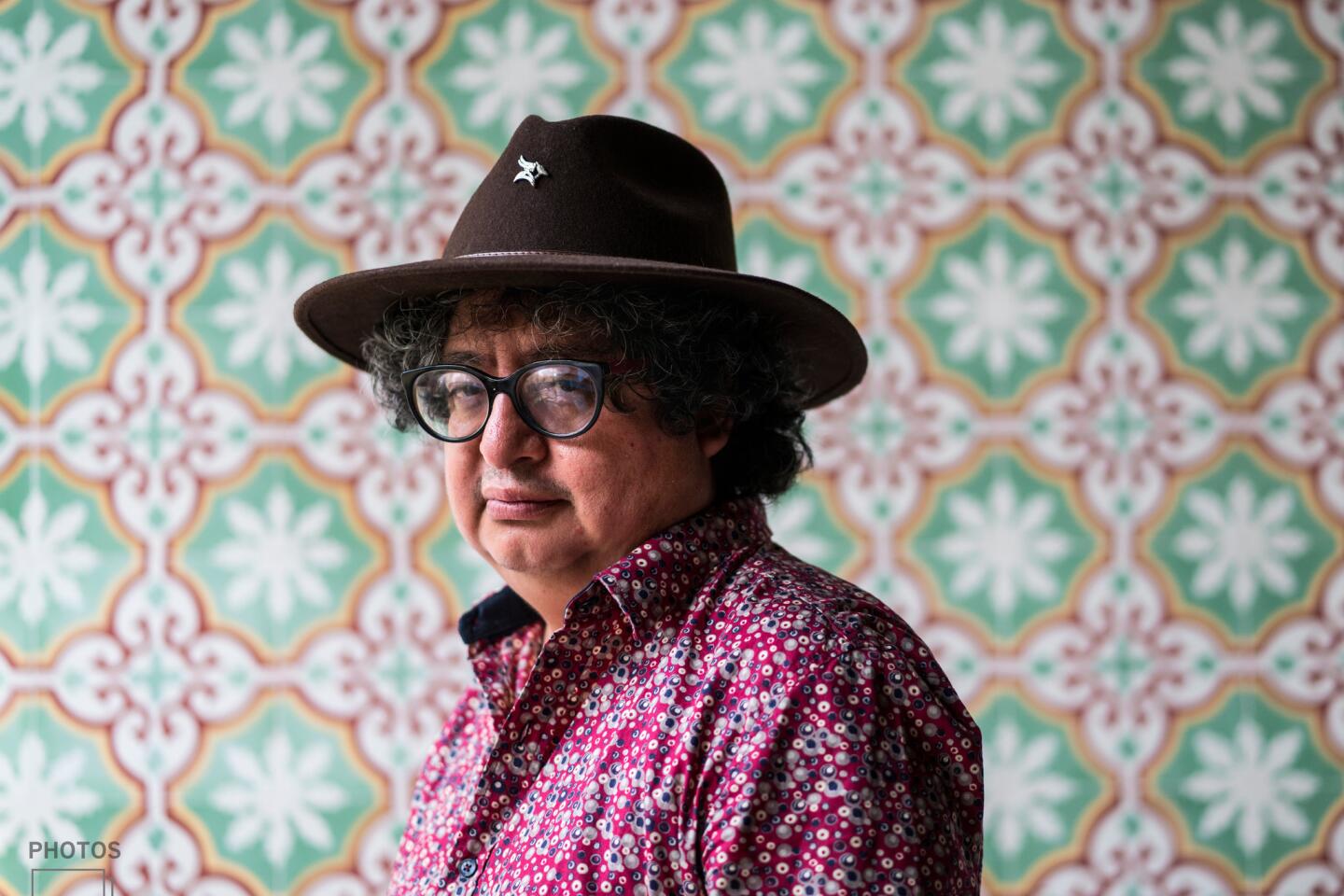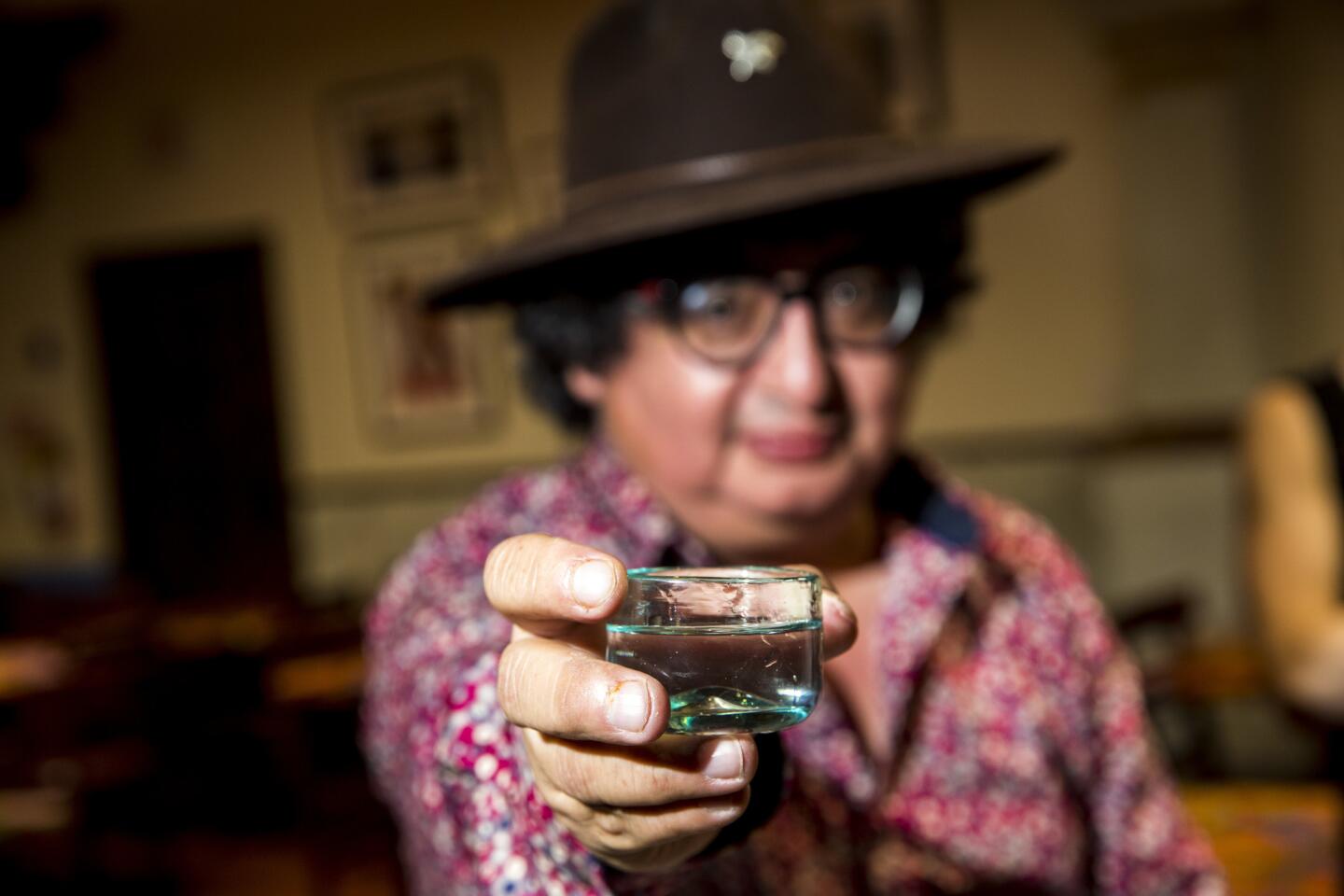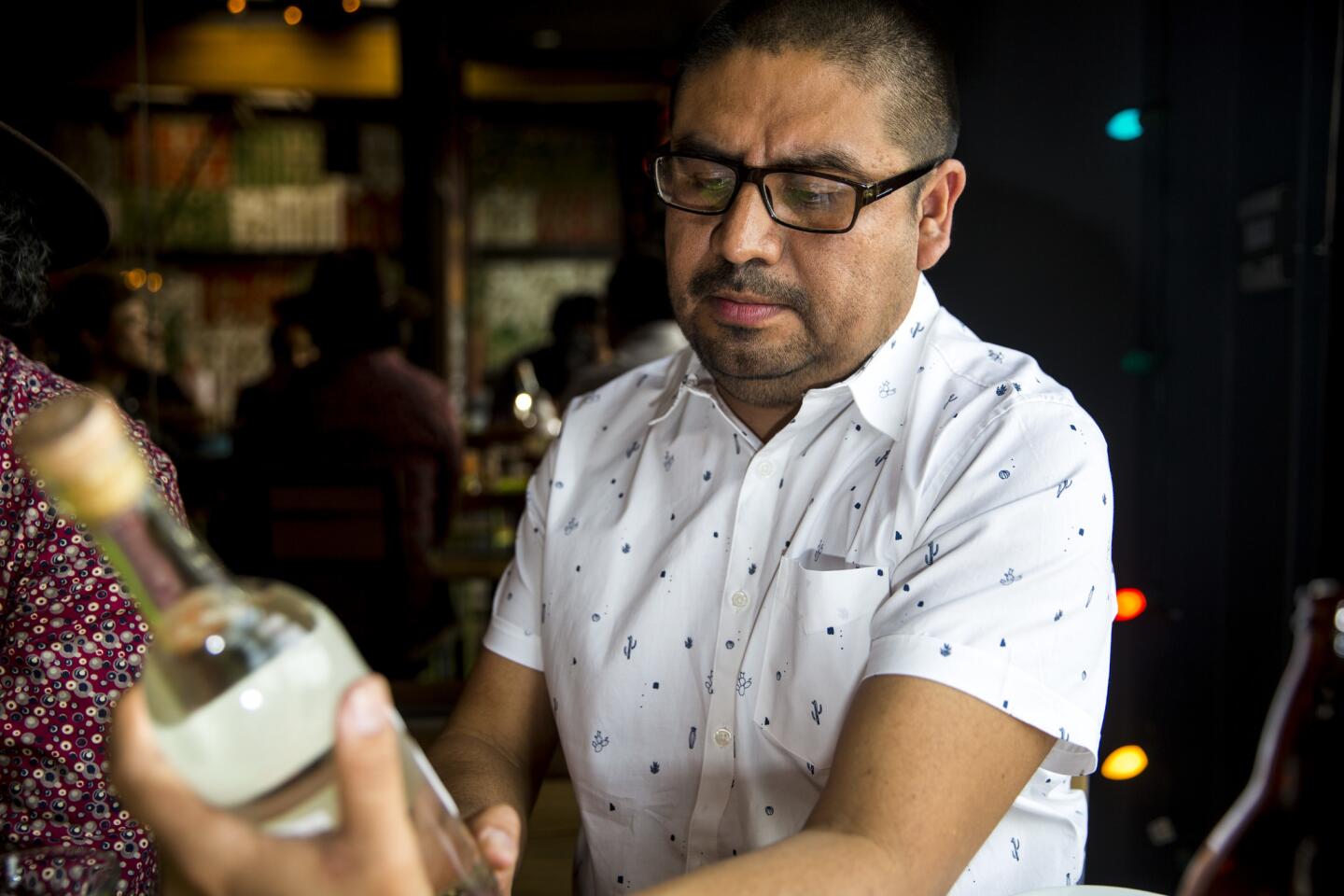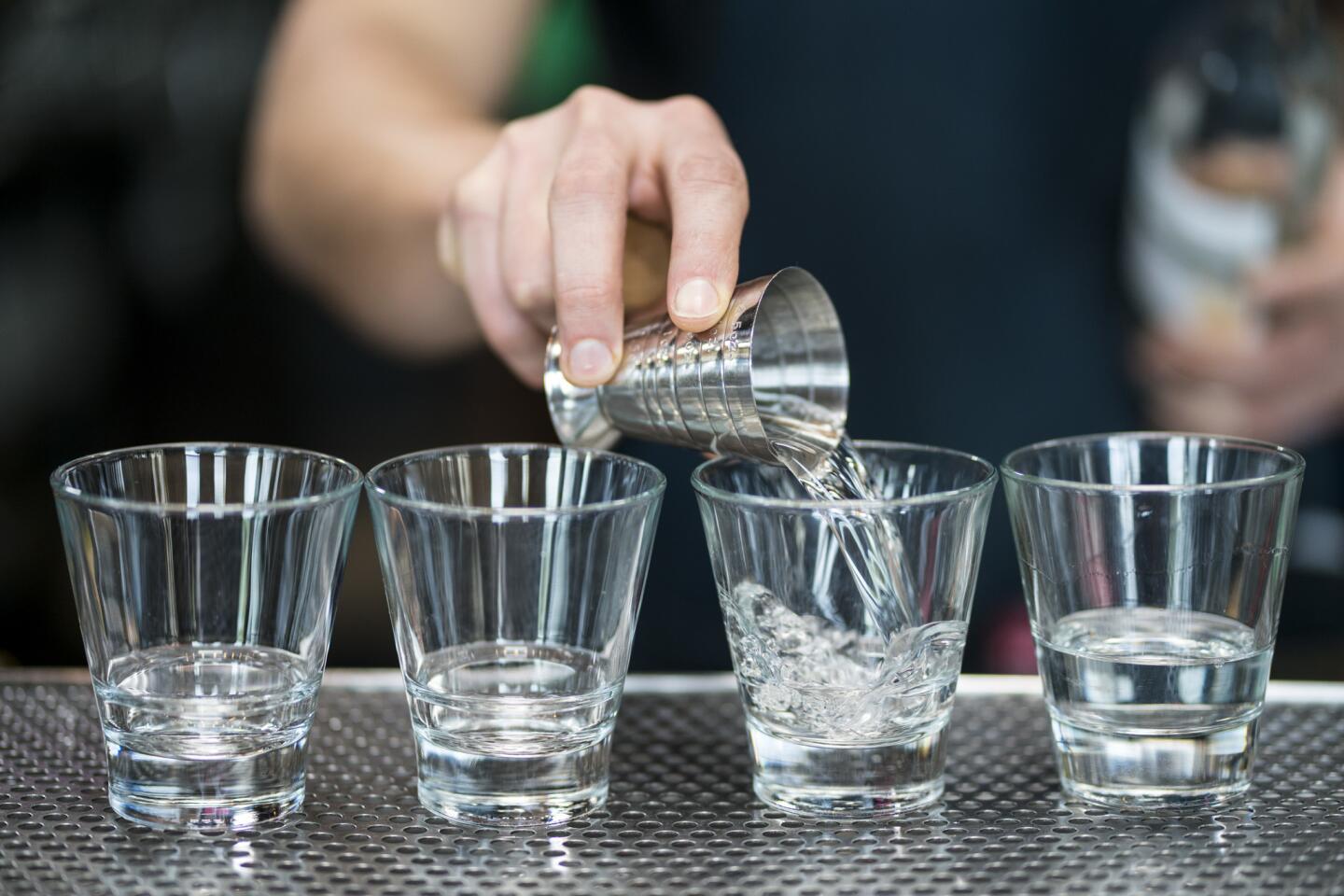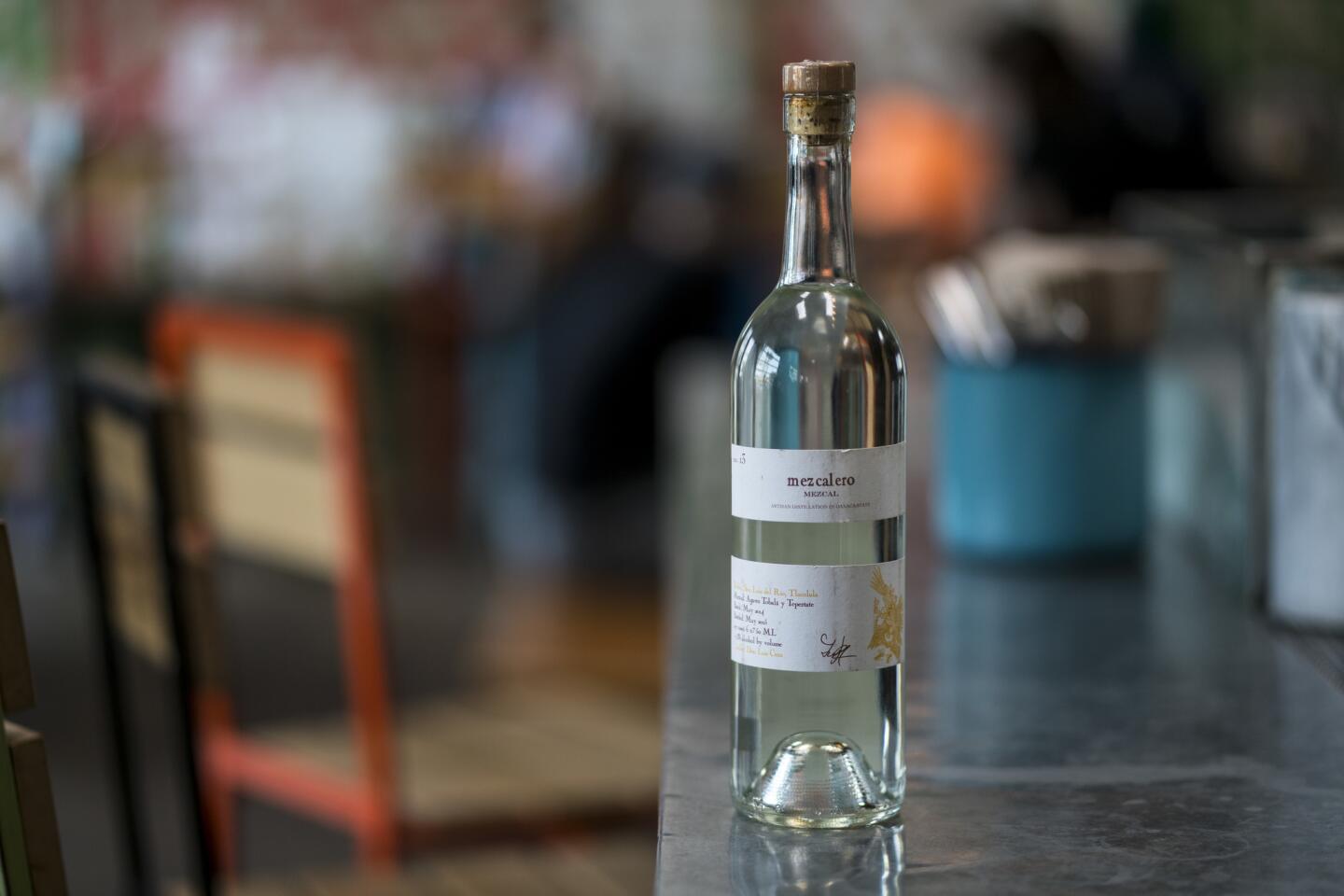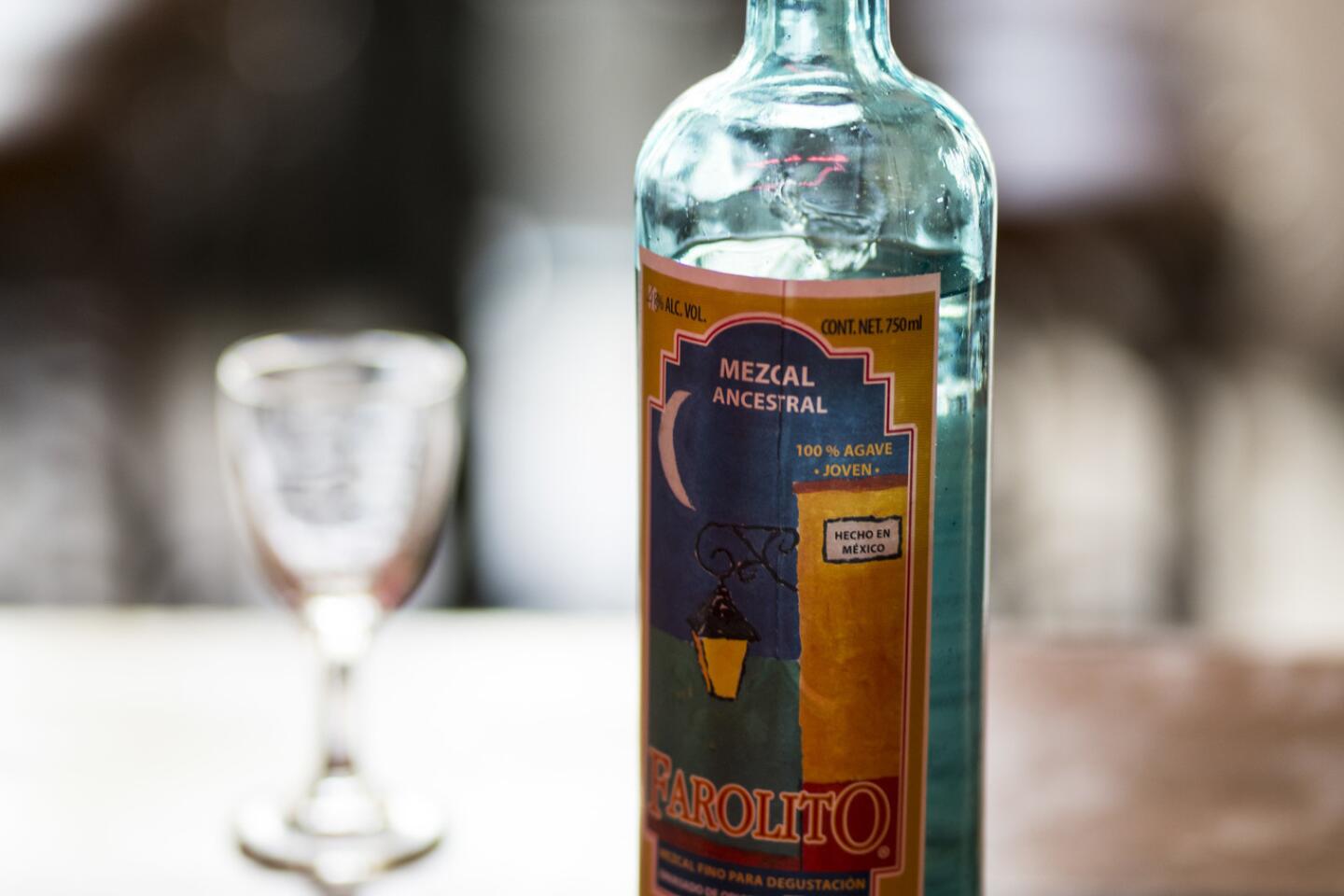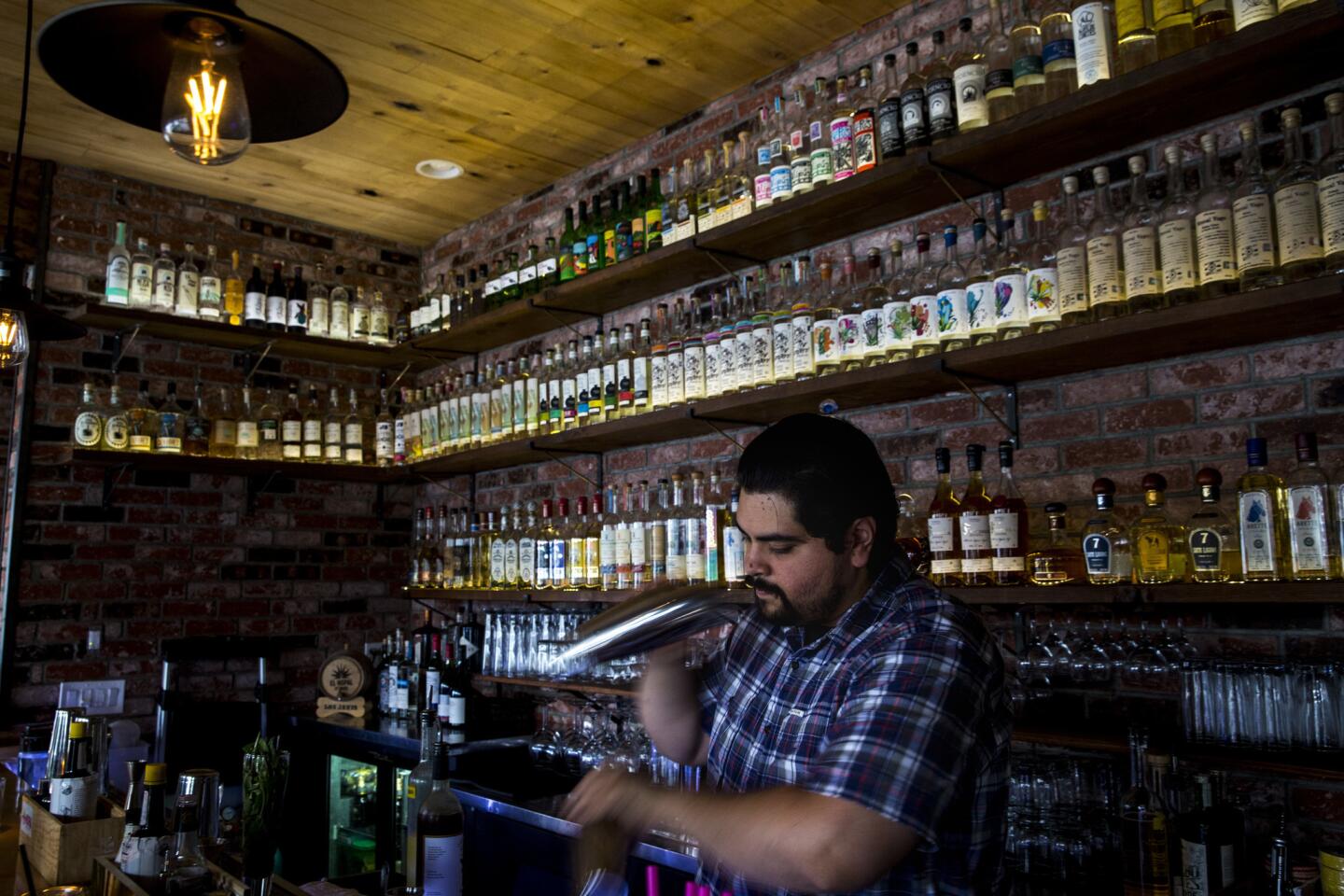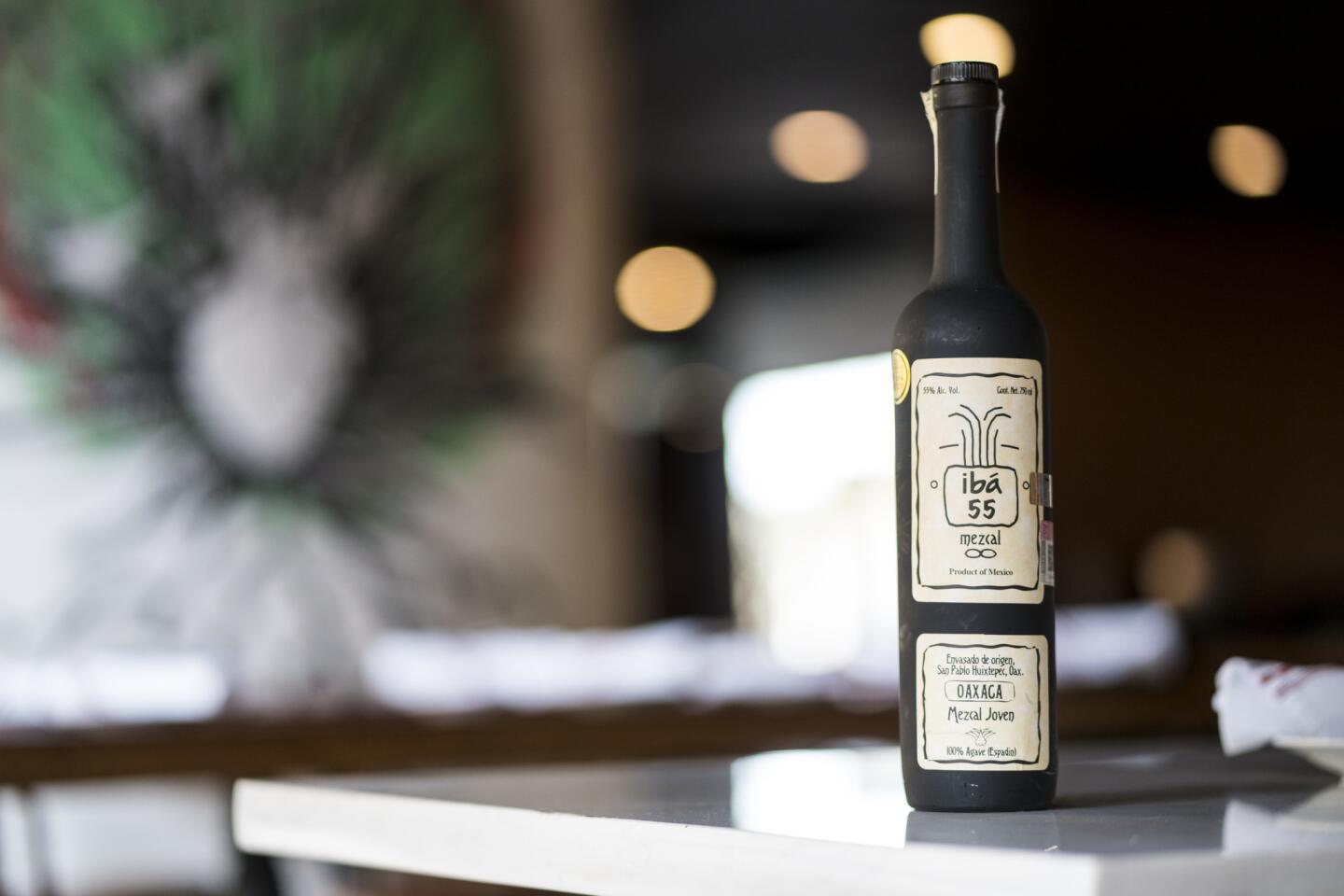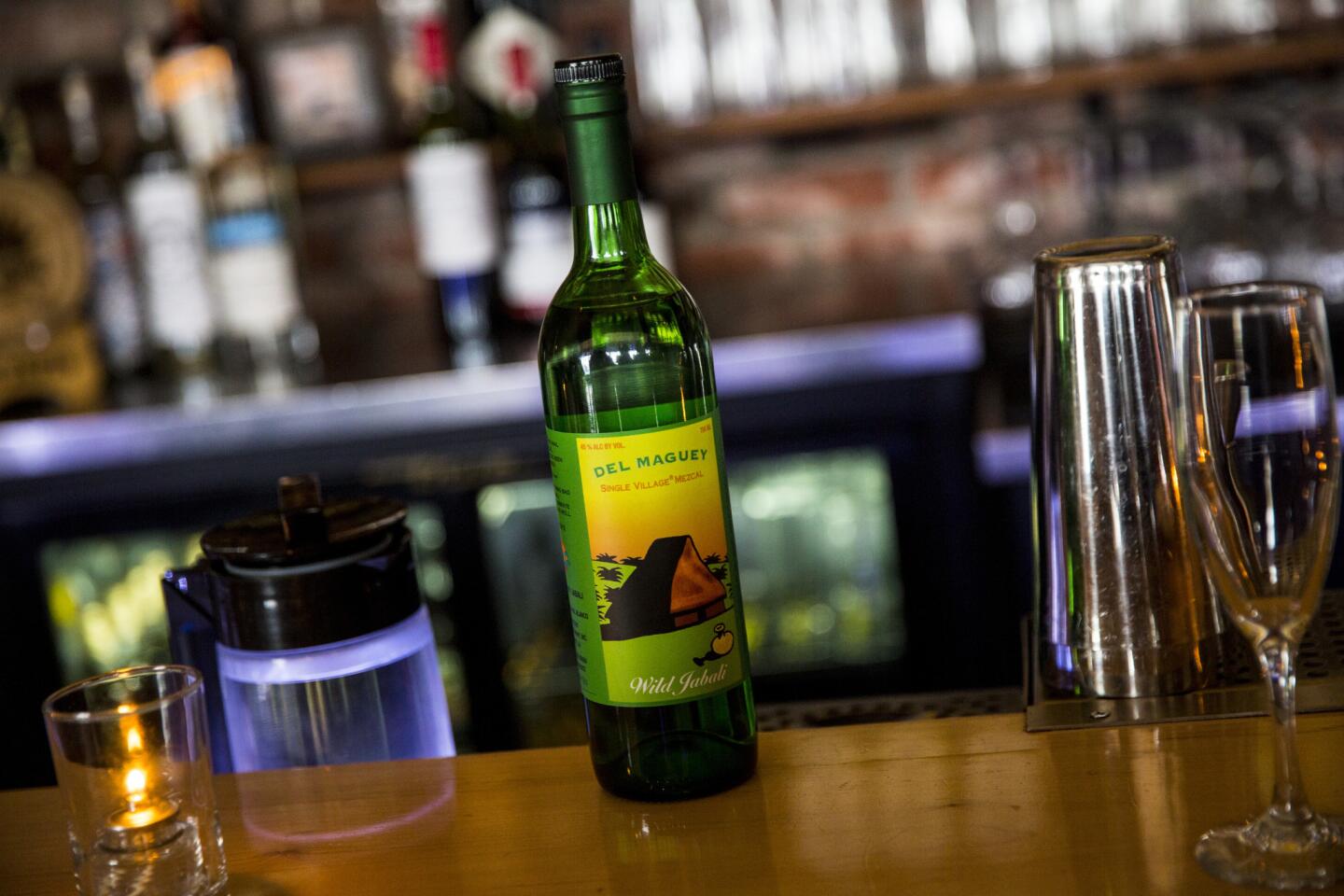A Los Angeles mezcal crawl with Oaxacan mezcal master Ulises Torrentera
On a balmy morning in late March, the dining room at Guelaguetza, the Lopez family’s Oaxacan restaurant in Koreatown, was humming to life as regulars nursed half-finished cups of cafecito and plates of chilaquiles de mole. At 11 a.m., the bar was mostly empty save for Ulises Torrentera, who raised a glass of mezcal and proposed a toast. "After the first shot of mezcal," he said in Spanish, "life starts."
In the world of agave aficionados, Torrentera looms larger than life, but leaning against the bar at Guelaguetza with his mop of salt and pepper curls and thick-rimmed glasses, he barely crests five and a half feet. When Bricia Lopez, the daughter-turned-doyenne of Guelaguetza, spots him across the room she squeals, unleashing hugs, kisses and a prolonged, "Como estaaaaaaa?"
Lopez first met Torrentera in Oaxaca City, where he is known as the author of two influential texts on mezcal and the co-owner of the mezcaleria In Situ with his partner Sandra Ortiz Brenna.
"You can't really speak of mezcal in Oaxaca without knowing Ulises," Lopez says, and you can’t speak of mezcal without speaking of the state of Oaxaca, where mezcal is as essential to life as mole. "My family has been making mezcal forever,” Lopez adds, “but it wasn't until I met Ulises that I started seeing it like wine, with different agaves and flavor profiles. I think everybody knows there are Cabs and Merlots, but most people don't know there are mexicanas and tobaziches, and he was the person who opened my eyes to that."
Once demonized as the drink of Mexico's rural poor, mezcal — which in simplest terms can be described as a distillate of agave that has been produced in Mexico for centuries — has become what one L.A. bartender dubbed "the hipster's Cognac." Unlike tequila, which can only be made with blue agave, mezcal can be made with more than 40 varietals, lending the category a vast spectrum of flavors. The mezcal boom north of the border parallels the popularity of modern Mexican restaurants and a surge of interest in regional Mexican cuisine; in the last decade, dedicated mezcalerias have popped up in every major city in America, from Baltimore to Seattle.
"You can't really speak of mezcal in Oaxaca without knowing Ulises"
— Bricia Lopez
Los Angeles has seen its own mezcal renaissance, and today Torrentera and Ortiz Brenna, along with Oaxaca-born L.A. restaurateur Ivan Vasquez, are embarking on a five-stop mezcal crawl across the city to survey the popularity and growth of Mexico's national spirit in the most Mexican city in America. So Guelaguetza, which stocks more than 50 expressions of mezcal and might as well serve as the Oaxacan consulate in Southern California, is the obvious place to start.
The first pour of the day is distilled from tepeztate, a type of agave that can take 20 to 30 years to reach maturity before harvest. Torrentera takes a sip and immediately identifies it as from Santiago Matatlán, a town outside of Oaxaca City where dozens of brands have clustered their palenques, or distilleries. "Each village has the print of the terroir, and Matatlán is less complex than other regions," says Torrentera. "That doesn't mean it's bad, but other regions are more herbal and taste of the endemic fruits and vegetables."
With four more stops to go, time is short, and after another round of hugs everyone is in an Uber, en route to Petty Cash, chef Walter Manzke’s 5-year-old homage to Tijuana street tacos in West Hollywood. At a red light on Highland Avenue near Wilshire Boulevard, Torrentera points at an agave growing on a parkway. "That looks like a cupreata," he says, a varietal commonly used to make mezcal in Guerrero and Michoacan. As the car glides north toward Beverly Boulevard, blue and green spikes appear and disappear out the window, a reminder that Mexico, the epicenter of biodiversity in agave, is not so far away.
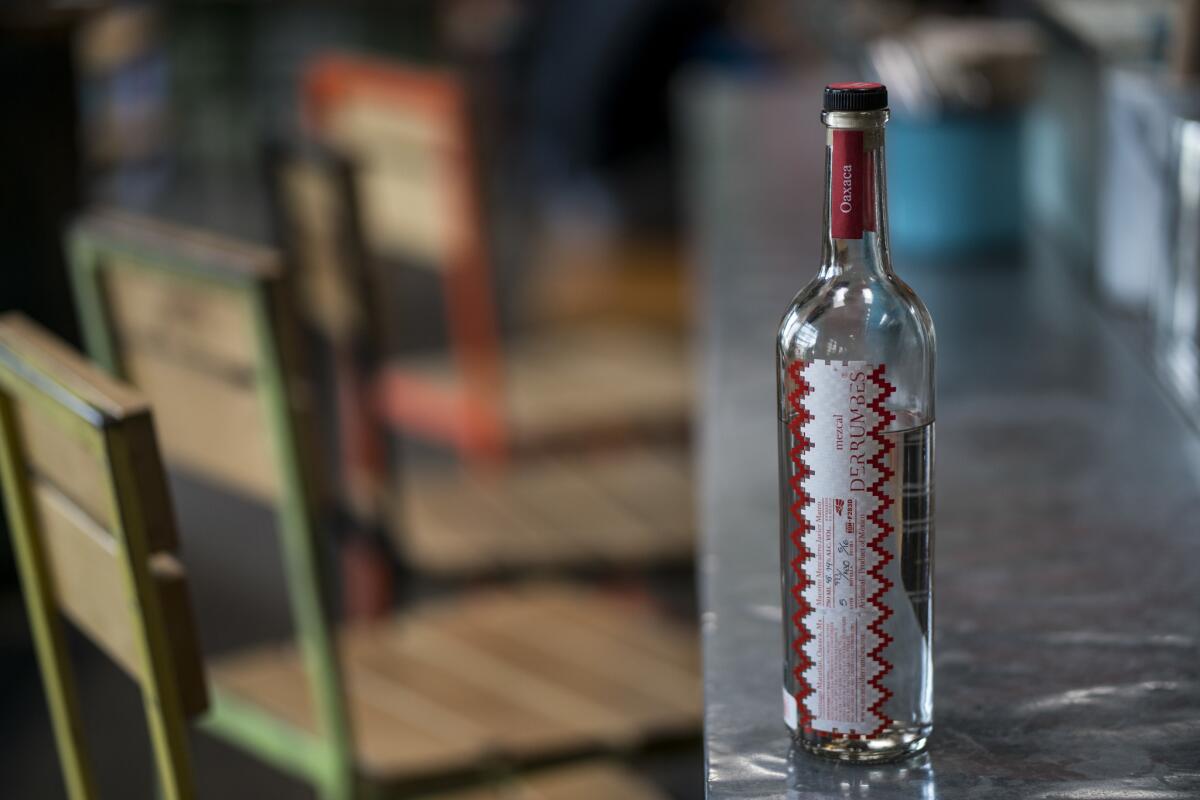
At Petty Cash, the bar is stacked five shelves high with mezcal. To the uninitiated, the variety is overwhelming, but for Torrentera and Vasquez, a vast selection of brands, representing multiple agaves, regions and styles is the first sign of a good mezcaleria. They settle on an ensemble, or blend, of tepeztate and espadin, but like a needle scratching vinyl, the mood shifts abruptly when they both take a taste. "We don't taste the tepeztate," Vasquez says — illuminating one of the biggest challenges American consumers face when drinking mezcal.
As consumers educate their palates, they are taught to value the complex flavors of rare agaves like the wild tobala, or tepeztate, which take longer to grow and fetch higher prices than the more common espadin. One of the concerns among traditionalists is that brands are incorporating trace amounts of these varietals, not for flavor, but to add trendy buzzwords to their bottles and sell their products at a higher price point. At $40 a shot, consumers assume that they’re paying for the complexity that comes from the 20 to 30 years a tepeztate spent in the soil, but the reality is that unless you trust the producer, it's difficult to know what you are getting until it's in your mouth.
Some brands, like Vago and Mezcalosfera, will break down the percentage of each agave used on the bottle, and include the name of the maestro mezcalero, or master distiller, the method of distillation, the village where it was distilled and even the type of water used. For Vasquez, this level of transparency is essential, and when the brands don't provide the information, he tracks it down himself.

At the third stop, Madre, Vasquez's 7,000-square foot love letter to Oaxacan food and drink in Torrance that opened in August, the 265-bottle mezcal menu is organized by type of agave. Beneath each bottle Vasquez lists the who, where and how of its production. His ambition for 2018 is to meet every single maestro mezcalero represented on the menu, and at his restaurant El Nopal in Palms — the fourth stop on the crawl — his mission is much the same.
"My chef tells me I'm going crazy on the mezcal," Vasquez says, "but this is the history of Mexico. It's me. I want to educate people to understand what they’re drinking."
The very fact that one can spend an entire day zigzagging across the city tasting different expressions of mezcal demonstrates the extraordinary growth of the industry in Los Angeles. (Had the day’s crawl veered downtown, they might have stopped for a flight at the agave emporium Las Perlas, or for a tamale and a mezcal at chef Ray Garcia's Broken Spanish, which pours at least 100 bottles by the glass.)
On the way to Scopa in Venice, the fifth and last stop on this tour, where Pablo Moix and Steve Livigni have amassed an extensive selection of mezcals, Torrentera questions whether the exposure and popularity north of the border is a good thing.

"Mezcal está de moda," says Torrentera. "And there are people who drink it because it's in style, and people who drink it to get to know the drink, and that should be the reason why it's popular, not because it's cool."
Spreading the word of traditional mezcal helps Oaxaca, Torrentera adds, which is why he’s now bottling his own mezcal under the brand name Farolito. Exporting to the U.S. was never a goal for Torrentera, but as major brands like Casamigos enter the marketplace with mass-market bottlings, he wants to give consumers another choice. So that evening he’ll board the Amtrak Surfliner with six bottles of Farolito tepextate in his suitcase, and tomorrow he’ll pour his mezcal at Mexico in a Bottle, a tasting event in San Diego, where he’ll continue to spread the gospel of traditional mezcal.
Stops on the mezcal crawl, each restaurant featuring at least a dozen producers and a wide variety of agaves and regions.
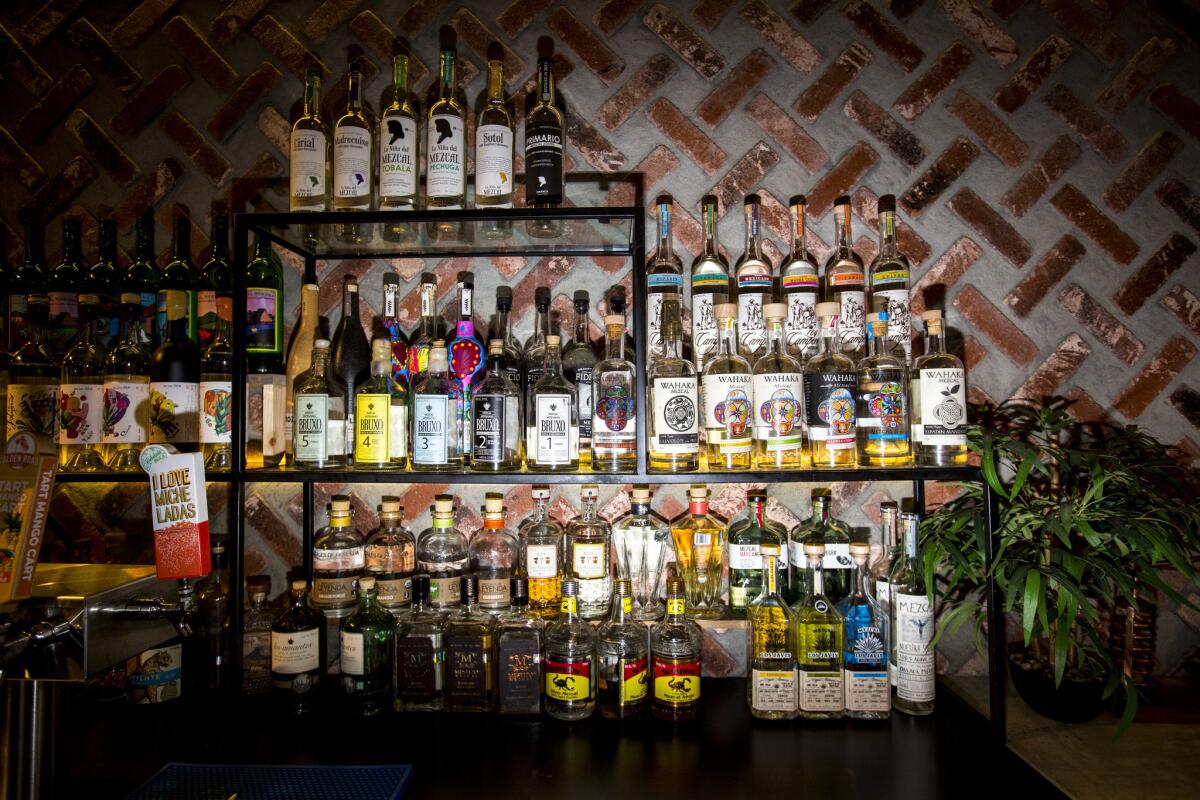
Guelaguetza — One of the first L.A. institutions to expand its mezcal bar, eight years ago, it now stocks 60 bottles at any given time, including multiple expressions from Los Javis, which has roots in L.A. and Oaxaca. 3014 W. Olympic Blvd., Los Angeles, (213) 427-0608.
Petty Cash Taqueria — The restaurant’s mezcal bar is fast approaching 100 bottles, with 17 brands and dozens of ensembles and single-agave expressions to choose from, including extensive offerings from well-respected producers Real Minero and Rey Campero. 7360 Beverly Blvd., Los Angeles, (323) 933-5300.
Madre — With 265 bottles and counting, Madre rivals Las Perlas for the most extensive mezcal selection in the L.A. area. The menu is as long as it is educational, with drawings of each agave and detailed explanations on their origin and flavor. 1261 Cabrillo Ave., Suite 100, Torrance, (310) 974-8005.
El Nopal — A destination for mezcal and Oaxacan classics, such as tlayudas and molotes, that offers 201 bottles as well as curated flights. 10426 National Blvd., Los Angeles, (310) 559-4732.
Scopa Italian Roots — Co-owner Pablo Moix says mezcal outsells tequila at his bar, which stocks at least 60 bottles at any given time, including a one-off collaboration Moix produced with Vago Mezcal. 2905 Washington Blvd., Venice, (310) 821-1100.
Eat your way across L.A.
Get our weekly Tasting Notes newsletter for reviews, news and more.
You may occasionally receive promotional content from the Los Angeles Times.
